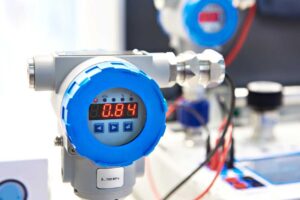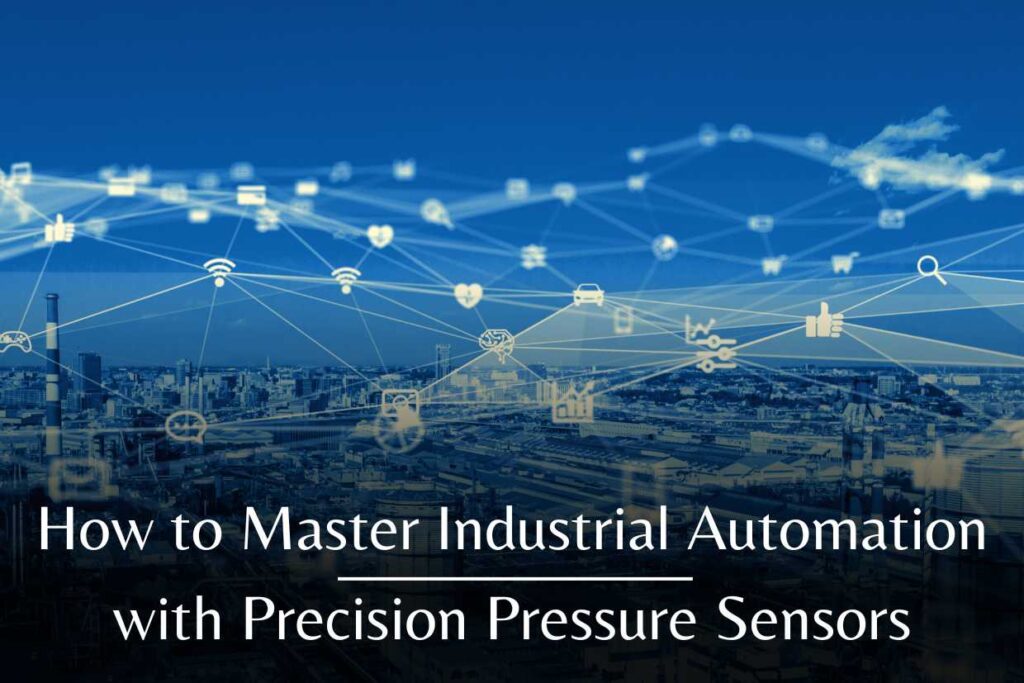The Invisible Forces That Guide Industrial Perfection
Imagine a bustling factory floor with whirring machinery, precise robotic arms, and products gliding seamlessly through assembly lines. Like a synchronised orchestra, all the moving parts operate harmoniously to churn out high-quality goods with blistering efficiency. But what’s the secret maestro conducting this industrial masterpiece? What invisible forces guide such complex processes towards operational excellence? More often than not, the answer lies in the dynamic measurement and management of pressure with precision pressure sensors.
Across various industries, from manufacturing to energy, pressure serves as a vital indicator of equipment health, performance, and safety. In hydraulic systems, pressure differentials drive the flow. In power plants, steam pressure propels turbines. On production lines, compressed air allows tools and machinery to function smoothly. Even the slightest fluctuations outside optimal levels can ripple outwards and cripple operations. That’s why mastering industrial automation relies heavily on precision pressure sensors to provide real-time visibility and control.
With advanced pressure monitoring, companies can optimise processes, prevent downtime, reduce waste, and take productivity to new heights. By unlocking the potential of pressure data, manufacturers can tap into game-changing insights to operate equipment sustainably and profitably. The result? Higher throughput, stellar uptime, lower costs, satisfied customers, and expanded market share.
But first, let’s dive deeper into understanding this indispensable, yet often invisible, aspect of industrial automation and process optimisation.
The Power of Precise Pressure Sensors in Industrial Automation.

In simple terms, pressure is the force applied perpendicular to an area. It seems straightforward enough, but pressure manifests in dynamic and multi-dimensional ways in complex industrial systems. Factors like flow, temperature, viscosity, pump speeds, and valve positions intersect to form a unique pressure profile for each application. That’s why choosing the correct pressure monitoring tools is crucial.
Types of pressure sensors.
Precision pressure sensors come in a range of types suited for different needs. They are,
- Gauge pressure sensors measure against ambient atmospheric pressure and are ideal for monitoring pressurised gases, hydraulics, and tank levels.
- Differential pressure sensors track the difference between two input pressures, providing valuable data on filters, pumps, and blockages in compressed air systems.
- Absolute pressure sensors use a sealed reference vacuum to give readings independent of the environment. They are perfect for altitude-sensitive applications.
No matter the technology, industrial-grade pressure sensors prioritise accuracy, stability, fast response, and reliability to deliver measurement certainty for process control and optimisation. Even the slightest deviations can spell doom, as Toyota once discovered when a faulty pressure sensor in their airbag systems forced the recall of over 1 million vehicles.
The importance of precision becomes even more apparent when examining the role of pressure sensors across sectors.
- Compressed air systems rely on steady pressure for pneumatic tools, paint spraying, packaging lines, and more in manufacturing. Drops in pressure lead to inconsistent equipment operation, while spikes cause premature wear.
- Hydraulic systems use fluid pressure to transmit power in machines, cylinders, clamps, and motors. Correct pressure allows smooth, synchronised movements. Excessive pressure stresses components and causes leaks.
- In power generation, pressure sensors help optimise boiler combustion, ensure correct steam conditions, and prevent turbine damage. In renewable energy systems, they monitor accumulators and hydraulic pitch control of wind turbines.
- In oil and gas refineries, pressure links flow, temperature, and control valves. Careful pressure management reduces corrosion and piping issues while improving safety mechanisms like relief valves.
By tracking pressure fluctuations in real-time and spotting subtle systemic changes, industrial operators can take corrective action instantly…a true superpower made possible by advanced pressure sensor technology integrated with industrial automation and process control systems.
From Pressure Sensor Data to Process Optimisation.

Pressure sensors are the eyes on the ground, providing actionable data to drive intelligent automation. High-speed communication standards like IO-Link allow pressure readings to be transferred continuously to control systems for instant analysis. This powers a feedback loop where operators can monitor status, identify issues, and remotely implement optimisations from a central location.
Data visualisation software condenses the pressure sensor feedback into intuitive graphics. A plant manager can glance at a dashboard to check critical metrics across equipment like pumps, compressed air lines, steam headers, and more. Colour-coded indicators spotlight pressures deviating from ideal zones, allowing rapid troubleshooting. Historical trend graphs reveal insightful patterns such as seasonal variability, equipment degradation, and demands on systems during production ramp-ups.
Operators can pivot from reactive to proactive maintenance by pairing sensor data with predictive algorithms. For example, capturing incremental pressure drops over time provides early warning of filter blockages long before system failure. Small spikes during idle periods could indicate developing leaks. Rapid cycling may highlight undersized pipes. The software gives clear recommendations on where to check for problems.
The result? Issues can be addressed during scheduled downtime rather than causing costly unplanned outages. Proactive adjustments also prevent accelerated wear and tear when equipment operates sub-optimally for prolonged periods. The combined impact is maximised uptime, lower maintenance costs, and increased equipment lifespan.
For managers, pressure sensor data delivers the complete picture needed to optimise processes through industrial automation. Locating the lowest system pressures allows for optimally placing compressed air intakes or adding supplementary air compressors. Dynamic pressure control technology uses real-time readings to adjust pump speeds or valve positions automatically, saving energy and stabilising processes. By uncovering hidden performance gaps, pressure sensors provide a golden opportunity to boost productivity.
Enabling Predictive Maintenance with Smart Pressure Sensors.
Innovation in sensor technology increasingly allows monitoring current pressure and accurately projecting future values. This paves the way for game-changing predictive maintenance capabilities that help assets perform optimally over their lifetime.
One method relies on pressure cycle trend analysis. Fluctuating pressure places mechanical stress on components, slowly enlarging cracks and wear until failure. Advanced pressure sensors can capture the fingerprint of pressure cycles and use machine learning algorithms to estimate the remaining useful life of assets based on cumulative damage. Operators gain the foresight to schedule maintenance at the optimal point before shutdown from an unexpected breakdown, but not prematurely either.
Cutting-edge pressure sensors can also identify developing issues through noise analysis. Subtle changes in pressure ripples hint at cavitation, bearing wear, or seal problems. By detecting these early signs of failure, assets can be serviced during planned windows. The cost savings are tremendous compared to catastrophic failures causing production losses.
Leak monitoring is another predictive application. A spike in idle pressure combined with declining levels during operation implies internal or external leakage. The pressure sensor alerts operators to trace and fix leaks before spills or hazardous ruptures occur. By controlling leakage rates, companies can achieve staggering reductions in energy and material losses.
These predictive abilities expand the value of pressure sensors from day-to-day process control into long-term strategic maintenance. Unplanned downtime can be drastically reduced. It is estimated to cost as much as $260 billion annually in the US alone. With critical machinery never caught off guard, facilities avoid profit-draining disruptions.
Mastering Industrial Automation with Smart Pressure Sensors.

Hopefully, This in-depth analysis emphasises how precision pressure sensors are fundamental to the pinnacle degree of industrial automation. Adopting this advanced technology provides a measurable competitive advantage. However, reaping the benefits involves more than just installing sensors anywhere. The key is integrating them strategically after careful planning.
Tips for integrating pressure sensors.
Here are some best practice tips for integrating pressure sensors into existing automation systems and maximising their effectiveness
- Conduct pressure mapping to identify optimal measurement points that will offer maximum visibility into your system’s health, energy consumption, and product quality. Don’t rely on assumptions.
- Define your bandwidth requirements. Select sensors with ample headroom for pressure spikes to avoid saturation. Over-engineering is better than under-engineering capacity.
- For steam applications, ensure the sensor’s materials withstand the process temperature and humidity while isolating the electronics. Look for IP67 or IP68 waterproof ratings.
- Use spark-free pressure sensors certified for intrinsic safety per ATEX directives for explosive environments. Take your time with ignition sources.
- Implement centralised monitoring by routing all sensor data over IO-Link for easy dashboard visualisation, historical analysis, and predictive analytics.
Following these guidelines and leveraging pressure sensors throughout your operations will shift your automation strategy into an entirely new gear. Gain the power to prevent problems before they occur, optimise efficiencies across the board, stretch asset lifetime, reduce costs, and drive profits to the next level. Not only that, but precise pressure data provides the confidence to push automation boundaries and pursue innovation.
Achieving Operational Excellence with Smart Pressure Monitoring.
As this extensive exploration has shown, pressure forms the lifeblood of automation across production facilities, power plants, refineries, and more. By deploying precision pressure sensors at critical points, operators gain the visibility and control to optimise processes, prevent downtime, reduce waste, stretch asset life, and maximise productivity.
Pressure data powers many capabilities, from instant troubleshooting to predictive maintenance and advanced process control. The insights uncovered help managers spot hidden performance gaps, implement data-driven improvements, and operate profitably. For organisations seeking to push boundaries and pursue innovation, pressure sensors provide the confidence to boost industrial automation and achieve operational excellence.
Ready to step into the future and magnify your industrial success? Request a consultation to explore how pressure monitoring can help your organisation realise untapped potential or download technical resources on pressure sensors in industrial automation to help chart the path towards precision performance. By mastering the invisible forces, pressure sensors hold the key to maximised efficiency, quality, safety, and profitability across your operations.





